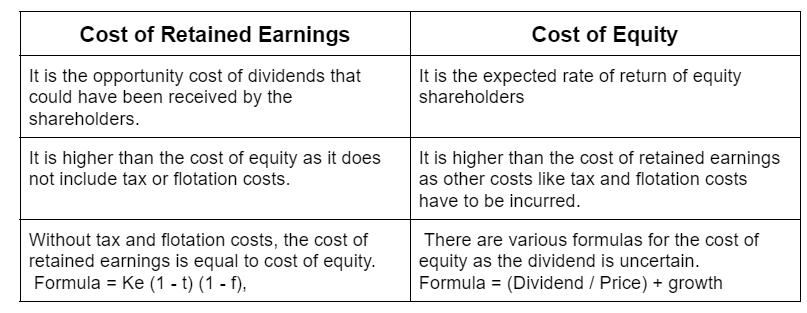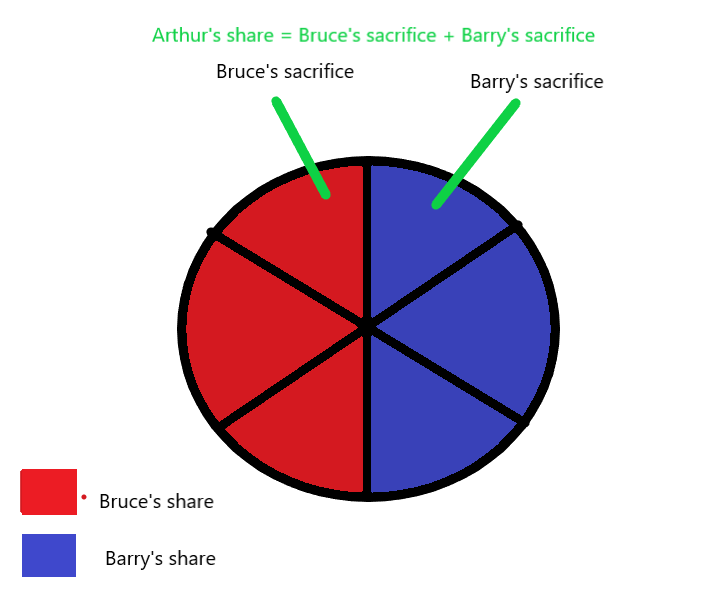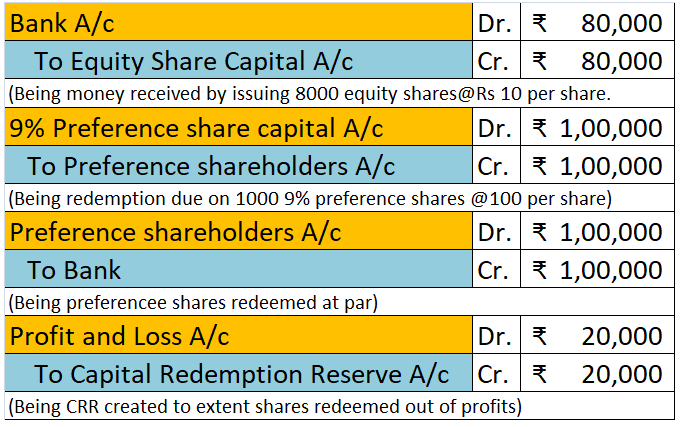Retained earnings are kept with the company for growth instead of distributing dividends to the shareholders. Therefore the cost of retained earnings refers to its opportunity cost which is the cost of foregoing dividends by the shareholders. Therefore the cost of retained earnings is similar to theRead more
Retained earnings are kept with the company for growth instead of distributing dividends to the shareholders. Therefore the cost of retained earnings refers to its opportunity cost which is the cost of foregoing dividends by the shareholders.
Therefore the cost of retained earnings is similar to the cost of equity without tax and flotation cost. Hence, it can be calculated as
Kr = Ke (1 – t) (1 – f),
Kr = Cost of retained earnings
Ke = Cost of equity
t = tax rate
f = flotation cost
Here, flotation cost means the cost of issuing shares.
EXAMPLE
If cost of equity of a company was 10%, tax rate was 30% and flotation cost was 5%, then
cost of retained earnings = 10% x (1 – 0.30)(1 – 0.05) = 6.65%.
From the above example and formula, it is clear that the cost of retained earnings would always be less than or equal to the cost of equity since retained earnings do not involve flotation costs or tax.
A company usually acquires funds from various sources of finance rather than a single source. Therefore the cost of capital of the company will be the weighted average cost of capital (WACC) of each individual source of finance. The cost of retained earnings is thus an important factor in calculating the overall cost of capital.
Another important factor of WACC is the cost of equity. The cost of equity is sometimes interchanged with the cost of retained earnings. However, they are not the same.

See less



The profits earned by a company are mainly divided into two parts: Dividend, and Retained Earnings The part of profit distributed to its shareholders is called a dividend. The part of the profit that the company holds for future expansion or diversification plans is called retained earnings. As theRead more
The profits earned by a company are mainly divided into two parts:
The part of profit distributed to its shareholders is called a dividend. The part of the profit that the company holds for future expansion or diversification plans is called retained earnings.
As the name suggests, retained earnings are the profit that is retained in the company. Retained earnings can be used for various purposes:
As the profits of the company belong to shareholders, retained earnings are considered as profits re-invested in the company by the shareholders.
The formula to calculate the cost of retained earnings is:
(Expected dividend per share / Net proceeds) + growth rate
The expected dividend per share is divided by net proceeds or the current selling price of the share, to find out the market value of retained earnings.
The growth rate is then added to the formula. It’s the rate at which the dividend grows in the company.
For example:
The net proceeds from share is Rs 100, expected dividend growth rate is 2% and expected dividend is 5.
Cost of retained earnings
= (Expected dividend per share / Net proceeds) + Growth rate
= (5 / 100) + 0.02
= 0.07 or 7%
See less